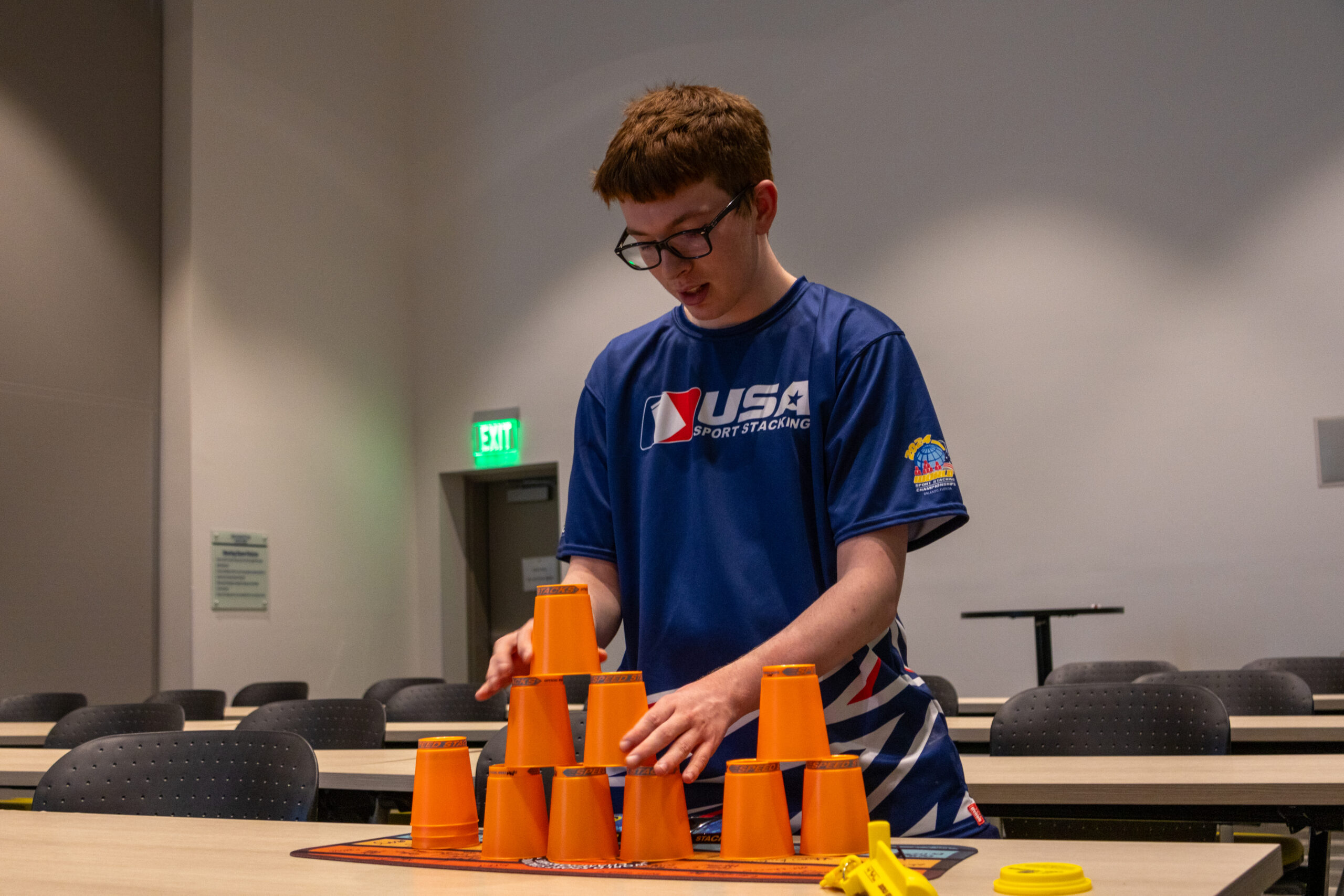The cycle is a combination of both the 3-3-3 and 3-6-3 stacking skills. Photo by Riina Korri.
DAVID JACOBS | STAFF REPORTER | drjacobs@butler.edu
Since he was first introduced to sport stacking in the sixth grade, first-year sports media major Matthew Wims has been in love with the rather unconventional sport.
Wims was introduced to sport stacking through videos on the internet and was gifted his first set of cups by his grandparents soon after. At the World Sport Stacking Association Championships (WSSA) from March 27-29 in Orlando, Florida, he put his talents on display by securing eighth place in the cycle event.
After his impressive week in Orlando, Wims sat down with The Butler Collegian to discuss his sport stacking journey.
THE BUTLER COLLEGIAN: What exactly is sport stacking?
MATTHEW WIMS: Sport stacking is a sport where you stack nine to 12 cups in certain sequences as fast as you can. Whoever has the fastest time wins, so it is a timed sport. When I found out about it, I thought it was the coolest thing ever. I love the incredible speed and repetition of it.
TBC: While in Orlando for the WSSA Championships, how was the competition there?
MW: The way it is structured is that you do preliminary rounds for each of your events (3-3-3, 3-6-3, cycle) and whoever makes top 10 from the division makes the finals. There were 14 of us in the 19- to 20-year-old male division, and it was highly competitive since it was the world championship. The five-time reigning world champion, a guy from Malaysia, was in my division. So, that was really intense.
I ended up making finals for the cycle and ended up beating him and getting eighth in the division for that event.
TBC: Sport stacking is not a conventional sport, but do you still consider yourself an athlete?
MW: Yes [I would], because we still have to go through certain training. It is part of the AAU Junior Olympics as well, so I would consider it a sport. The past two weeks before the world championships I did competition training. In sport stacking, we get two warm-ups and three attempts; whichever the fastest time out of the three attempts is the time that is recorded. So, during training, I would do each of my three events with that format for about 15-30 minutes. It really helps getting consistent speeds, times and helps with my confidence.
TBC: What are some of your favorite memories through sport stacking?
MW: My first big memory was going to the 2017 [AAU] Junior Olympics in Detroit. I got to meet all the big names I looked up to and the fastest stacker in the world. It was a good tournament, and I ended up winning a bronze medal in the cycle event. That was just my second-ever tournament.
In stacking, everyone remembers their first tournament and in that one, I finished second. Everyone was impressed because it was my first tournament and still got second place.
In 2018, I went to the world championships as well. At the time I was on the state team in Tennessee, and that year they allowed state teams to go to the world championships.
Getting on Team USA was a huge achievement for me. When I got the call from the coach, it was a great day. I got the call during October 2018, at that point I was stacking for two-and-a-half years.
TBC: So, basketball players have their favorite brand of shoes, baseball players have their favorite brand of glove — for stacking, is there a favorite brand of cups you prefer to use?
MW: Yeah, so I use the Pro Series. Regular stacking cups have a hole in the center and then three holes on the side. For the Pro Series, it just has an open hole on top, and they definitely stack better than other cups.
TBC: Over your time stacking, what is the most impressive thing you have done?
MW: I can do the cycle stack in 5.3 seconds, so that was definitely a big feat for me.
TBC: What is one last thing you want people to know about stacking?
MW: I recommend checking sport stacking out. Especially if there are any younger kids that are looking for something new because it could change their lives like it did mine.



